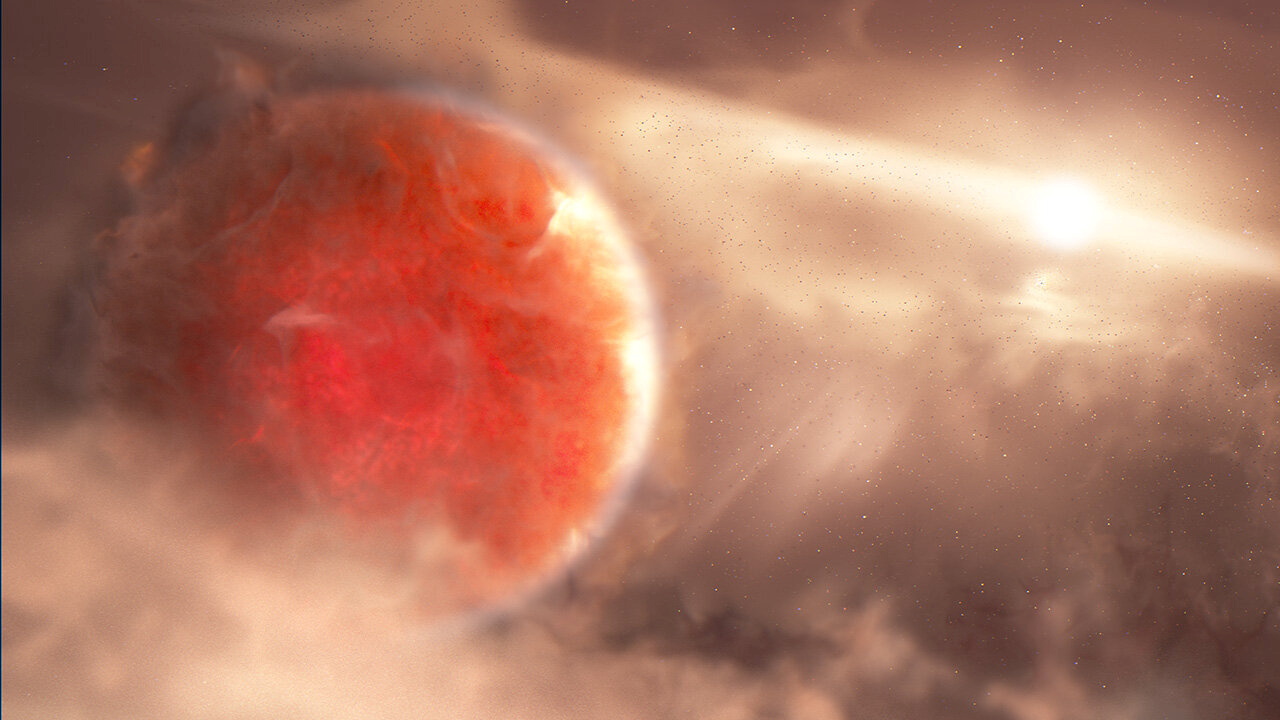Charles Cadieux, Ph.D. A team of international researchers led by A student of University of Montreal, Canadaand a member of the Institute for Exoplanet Research (iREx) announced TOI-1452 b, an extraterrestrial discovery It orbits one of two smaller stars in a binary system located in the constellation Draco About 100 light years from Earth.
An exoplanet is slightly larger in size and mass than Earth and located far from its star, where its temperature is neither too hot nor too cold for liquid water to exist on its surface.. Astronomers think it could be a “sea planet,” like some of Jupiter’s and Saturn’s moons.
In an article published in Journal of AstronomyCadieux and his team described observations that shed light on the nature and properties of this unique exoplanet.

“I am very proud of this discovery because it shows the high potential of our researchers and instruments.”, said René Doyon, professor at the University of Montreal and director of iREx and Observatoire du Mont-Mégantic (WMO). “Thanks to OMM, a special instrument designed in our laboratories called SPIRou and an innovative analysis method developed by our research team, we were able to detect this one-of-a-kind exoplanet.”
NASA’s TESS space telescope scans the entire sky for planetary systems close to our planet, which put researchers in the path of this exoplanet. Based on the TESS signal, which shows a slight decrease in brightness every 11 days, astronomers predict a planet 70% larger than Earth.
Charles Cadieux is part of a team of astronomers conducting ground-based follow-up observations to confirm the planet type and characteristics of candidates identified by TESS. It uses a camera called PESTO installed on the WMO telescope It was developed by Professor David Lafreniere of the University of Montreal and his Ph.D. Student of François-René Lachapelle. “WMO played a key role Confirming the nature of this signal and estimating the radius of the planetCadieux explained. “This is not a routine test. We had to confirm that the signal detected by TESS was actually caused by an exoplanet orbiting TOI-1452, the larger of the two stars in that binary system.”

The host star TOI-1452 is much smaller than our Sun and is one of two stars of the same magnitude in a binary system. The two stars orbit each other and are separated by a smaller-than-telescopic distance (97 AU, or two and a half times the distance between the Sun and Pluto). TESS sees them as a point of light. But PESTO’s resolution is high enough to distinguish the two objects, and the images showed the exoplanet orbiting TOI-1452, which was confirmed by subsequent observations by the Japanese team.
To determine the planet’s mass, the researchers observed the system with SPIRou, an instrument installed on the Canada-France-Hawaii telescope in Hawaii. Largely designed in Canada, SPIRou is the best Study low-mass stars like TOI-1452 because it operates in the infrared spectrum, Where these stars shine. Even then, it took more than 50 hours of observation to estimate the planet’s mass, which is thought to be nearly five times that of Earth.
Etienne Articau and Neil Cook, researchers at iREx at Université de Montréal, were instrumental in analyzing the data. They have developed a powerful analytical method capable of detecting planets in the data collected with SPIRou. “LPL method [for line-by-line] This allows us to clean the SPIRou data of many parasitic signals and reveal the faint signature of planets like our team discovered.Artigao explained.
The team includes Quebec researchers Furbot Jahander and Thomas Vandal, two Ph.D. Students at the University of Montreal. Jahandar analyzed the composition of the host star, which is useful for constraining the internal structure of the planet, while Vandal was involved in analyzing the data collected with SPIRou.

A world full of water
extraterrestrial TOI-1452 b may be rocky like Earth, but its radius, mass and density suggest a world very different from ours.. Earth is basically a very dry planet; Although we sometimes call it the Blue Planet because about 70% of its surface is covered by oceans, water actually makes up only a small fraction of its mass, less than 1%.
Some exoplanets may have a lot of water. In recent years, astronomers have discovered and determined the radii and masses of several exoplanets between Earth and Neptune. (about 3.8 times larger than Earth). Some of these planets have densities that can only be explained if a large fraction of their mass is composed of material lighter than the water that makes up Earth’s interior. These hypothetical worlds are called “sea planets”.
“TOI-1452 b is one of the best candidates for an ocean planet we have found to date.said Cadieux. “Its radius and mass indicate a much lower density than would be expected for a planet made of metal and rock like Earth.” Michaelo Plotnikov and Diana Valencia of the University of Toronto are experts in modeling exoplanet interiors. His analysis of TOI-1452 b shows that water reflects up to 30% of its mass, a ratio similar to that of some of our solar system’s natural satellites, such as Jupiter, Ganymede and Callisto, and Saturn’s moons. ., Titan and Enceladus.
Continue reading:





:quality(85)/cloudfront-us-east-1.images.arcpublishing.com/infobae/KTKFKR763RBZ5BDQZJ36S5QUHM.jpg)